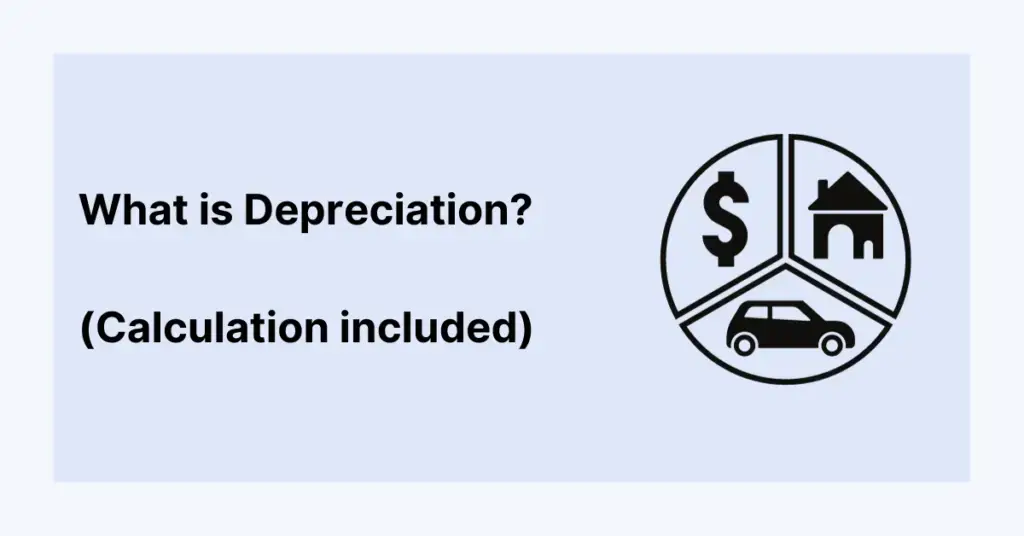What is depreciation?
Depreciation is the accounting process of allocating the cost of a tangible asset over its useful life. In simpler terms, it’s the rate at which an asset, such as machinery, equipment, and vehicles, loses its value over time due to wear and tear, deterioration, or obsolescence.
By depreciating an asset, businesses can match the cost of the asset with the revenue it generates over its useful life, thereby providing a more accurate picture of the company’s financial health.
Depreciation distributes the asset’s cost across several years rather than accounting for the total cost in the purchase year of the asset. This practice aligns with the matching principle in accounting, which recognizes the expenses in the period in which they help to generate revenue.
How does depreciation affect the balance sheet and income statement of a company?
Depreciation impacts both the balance sheet and the income statement of a company:
- Balance Sheet: Depreciation reduces the book value of an asset on the balance sheet. The accumulated depreciation reduces the asset’s original cost to reach its net book value. This, in turn, affects the total assets and, by extension, the owner’s equity on the balance sheet.
- Income Statement: Depreciation is an expense that appears on the income statement, reducing the company’s net income. Because it is a non-cash expense, it doesn’t impact the cash flow directly but does lower the taxable income, potentially reducing the tax burden for the company.

What assets can be depreciated?
Depreciable assets are typically long-term tangible assets with a useful life of more than one year. Here are some common types of depreciable assets:
Tangible Assets
- Buildings: This includes office complexes, warehouses, and factories.
- Machinery and Equipment: Items like manufacturing machines, computers, and kitchen equipment in a restaurant.
- Vehicles: Any cars, trucks, or other forms of transportation used exclusively for business purposes.
- Furniture and Fixtures: Desks, chairs, lighting fixtures, and other long-term furniture items used in a business setting.
Intangible Assets
- Software: Business software licenses can usually be depreciated over a predetermined useful life, although the term often used for intangible assets is “amortization.”
What assets cannot be depreciated?
Some assets are not subject to depreciation for various reasons. The most prominent types include:
- Land: Unlike buildings or machinery, land does not wear out and generally appreciates over time.
- Inventory: Items for sale or part of the production process are current assets
- Stocks and Bonds: These are investment instruments and do not depreciate.
- Collectibles and Antiques
- Assets with a Useful Life of Less Than One Year
How do you calculate depreciation expense?
To calculate depreciation, there are three critical information
1. Cost of the Asset
This is the initial price paid to acquire the asset, including any additional costs needed to bring the asset into service. Knowing the total cost of an asset is the starting point for any depreciation calculation. This figure includes not only the purchase price but also any additional costs incurred to bring the asset into operational condition, such as installation or delivery fees. The cost sets the upper limit on the amount to be depreciated over the asset’s useful life.
2. Useful Life of the Asset
This estimates the years the asset is expected to provide economic benefits to the company. Estimating the asset’s useful life allows the cost to be allocated over the years the asset is expected to benefit the company. The notion of “useful life” helps to align the depreciation expense with the revenue that the asset will generate, adhering to the matching principle in accounting.
3. Salvage Value
This is the estimated value that the asset will have at the end of its useful life. Salvage value is subtracted from the asset’s cost in methods like straight-line depreciation to ensure that the asset is not depreciated below its estimated ending value.
These pieces of information are crucial because they allow for a more accurate representation of an asset’s value, how it depreciates over time, and how its cost should be allocated across accounting periods. This, in turn, aids in more accurate financial reporting, better tax planning, and more informed business decision-making.
Types of Depreciation Methods?
There are several types of depreciation methods in accounting to allocate the cost of an asset over its useful life. The choice of method can have a significant impact on financial statements and tax obligations. Here are the most widely types:
Straight-Line Depreciation
This is the most straightforward and commonly used method. The asset depreciates equally over its useful life. In this approach, an equal amount of the asset’s value is depreciated each year until it reaches its estimated salvage value at the end of its useful life.
The formula is
Straight-line depreciation is commonly for assets with a reasonably consistent utility over their lifetime, such as office furniture, buildings, and certain types of machinery. It’s often the preferred choice for companies that seek simplicity in their accounting practices, as it results in a constant depreciation expense each year, making budgeting and financial analysis straightforward.
For example, a company purchases a computer system for $5,000 with an estimated useful life of 5 years and a salvage value of $500. Using the formula above, the company would record a depreciation expense of $900 yearly for five years. At the end of the asset’s useful life, its book value would be $500, its estimated salvage value.
Learn more about how to calculate straight-line depreciation
Double Declining Balance Method
The Double Declining Balance (DDB) Method is an accelerated depreciation method where a larger portion of the asset’s cost is expensed in the initial years of its useful life. Known as “double” because it depreciates the asset at twice the rate of the straight-line method.
This method is for assets that lose value more quickly in the earlier years of their lifespan, such as vehicles or computers. It is suitable when you want to recognize higher expenses in the initial years, which can be advantageous for tax purposes or for matching expenses more closely with revenues generated by the asset.
For example, suppose a company purchases machinery for $20,000 with an estimated useful life of 5 years and a salvage value of $2,000. To calculate the depreciation for the first year using the DDB method, the formula would be:
Annual Depreciation Expense (Year 1) =2 x (⅕) x $20,000 = $8,000
For the second year, the book value at the start of the year would be $12,000 ($20,000 – $8,000). The depreciation for the second year would be:
Annual Depreciation Expense (Year 1) =2 x (⅕) x $12,000 = $4,800,
And so on, for subsequent years. Note that you should ensure that the book value never falls below the estimated salvage value of $2,000 in this example.
Units-of-Production Method
The Units-of-Production (UOP) method of depreciation is based on the actual usage or output of an asset rather than the passage of time. This method is beneficial for assets whose wear and tear is more closely related to the number of units they produce than the number of years they are in use.
Formula:
To calculate depreciation using the UOP method, the first step is determining the depreciation cost per unit.
Suppose a manufacturing machine costs $50,000 and has an estimated useful life of 25,000 production units, with a salvage value of $5,000.
Depreciation per unit would be = ($50,000 – $5,000)/ $25,000 = $1.80 per unit
If the machine produces 7,000 units in the first year, the depreciation expense for that year would be $1.80 x 7,000 = $12,600
What Is a Depreciation Schedule?
A Depreciation Schedule is a detailed document that outlines how an asset will depreciate over its useful life. The schedule lists the asset’s initial cost, estimated useful life, chosen depreciation method, salvage value, and annual depreciation expense. It serves as a record-keeping tool and a planning document for asset management and tax purposes.
A typical schedule includes:
- Asset Description: Identifies the asset, often detailing its make, model, and other identifying characteristics.
- Cost of the Asset: The initial cost of acquiring the asset, including any additional costs necessary to bring the asset into service.
- Estimated Useful Life: The number of years the asset will be helpful for the company.
- Salvage Value: The estimated value of the asset at the end of its useful life.
- Depreciation Method: The method used to calculate depreciation, such as Straight-Line, Double Declining Balance, or Units-of-Production.
- Annual Depreciation Expense: The yearly amount is based on the chosen depreciation method.
- Accumulated Depreciation: A running total of all depreciation expenses for the asset to date.
- Net Book Value: The asset’s initial cost minus accumulated depreciation shows the asset’s estimated current value.
By maintaining a depreciation schedule, companies can:
- Improve Accuracy: It provides a clear, chronological record of an asset’s depreciation, helping to avoid errors in financial reporting.
- Aid in Tax Planning: The schedule helps plan for tax deductions related to depreciation expenses.
- Facilitate Budgeting: The schedule can assist in future capital expenditure planning by indicating when to replace assets.
- Support Audit Compliance: It is a comprehensive record that can be beneficial during financial audits or reviews.
Example of Depreciation Calculation:
For example, let’s assume we purchased manufacturing machinery for $50,000. We’ll assume:
- Useful Life: 5 years
- Salvage Value: $5,000
- Total Estimated Units Produced over Lifetime: 25,000 units
- Annual Production: Year 1 – 7,000 units, Year 2 – 6,000 units, Year 3 – 5,000 units, Year 4 – 4,000 units, Year 5 – 3,000 units
Here’s how each method would depreciate the machinery:
| Year | Straight-Line | Double Declining Balance | Units of Production |
| 1 | $9,000 | $20,000 | $14,000 |
| 2 | $9,000 | $12,000 | $12,000 |
| 3 | $9,000 | $7,200 | $10,000 |
| 4 | $9,000 | $4,320 | $8,000 |
| 5 | $9,000 | $1,480* | $6,000 |
| Total | $45,000 | $45,000 | $50,000 |








